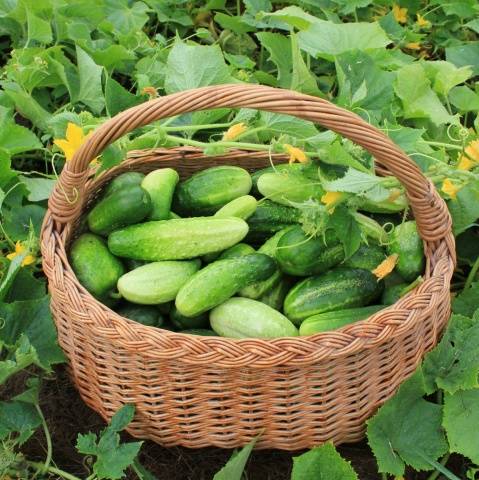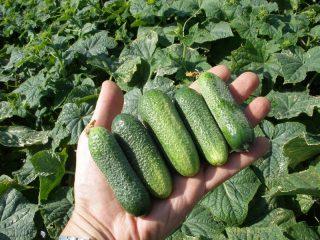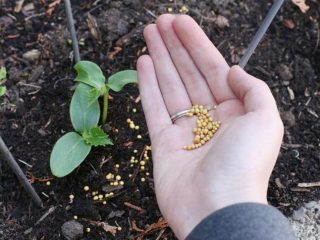Such a versatile remedy as ash for cucumbers, in the greenhouse will become a good friend and helper. After all, plant ash is not only a wonderful natural fertilizer, but also a good remedy for combating diseases of vegetable crops.
Why ash is better
Greenhouse cucumbers need feeding, especially they love nitrogenous compounds. The fastest and easiest way to fertilize the soil in a greenhouse is to apply mineral fertilizers of chemical origin there. But this option is not harmless: chemical trace elements accumulate in the ground, from which microorganisms die, which fluff up the soil, thereby providing the plants with the necessary root respiration. The thoughtless use of unnatural substances can adversely affect the taste of vegetables. In addition, such chemistry cannot be used during the flowering and fruiting of the cucumber, otherwise the fruits will be poisoned.
It is better to use natural fertilizers. Organic matter will not do any harm to cucumbers, earth or humans. It can be safely applied even at the time of flowering and fruiting of a vegetable. Natural ingredients completely heal the soil in 3 years. Natural feeding attracts earthworms and various beneficial microorganisms that process the remains of dead organic matter, making the soil more fertile and friable.
Ash occupies a special place among natural fertilizers - a product of burning plant residues. It is a natural and harmless source of these minerals:
- potassium;
- phosphorus;
- magnesium;
- zinc;
- calcium;
- copper;
- sulfur.
Due to the high content of potassium in its composition, plant ash is recognized as a good natural potash fertilizer. And potassium has a beneficial effect on the growth and proper formation of the cucumber stem.
Top dressing is made from various types of vegetation that is at hand. The source material will affect the quality of the fertilizer:
- There is a lot of phosphorus in wood ash.
- Peat ash is rich in calcium.
- The combustion product of grass is the richest source of potassium.
But, despite such a rich chemical composition, there is absolutely no nitrogen in the ash, which cucumbers love so much. Therefore, when fertilizing these vegetables ash it is better to compact the beds with legumes. They, thanks to the unique nodules on their roots, are able to saturate the earth with nitrogen.
Ash as fertilizer
Plant ash is a good and completely harmless natural mineral fertilizer. He will not do any harm. Ash can be used as fertilizer at all stages of a cucumber's life: in a solution of ash, you can soak seeds for planting; she is fed seedlings; it has a beneficial effect on the formation of the stem of a growing culture; it is harmless at the stage of flowering and fruiting of a vegetable.
For feeding cucumbers, ash is used in the form of a chatterbox. To do this, dilute 1 glass of ash in 10 liters of water. The resulting volume is used for 2 m² the area of planting cucumbers. The chatterbox is poured under the root of the vegetables. It is used no more than once a week.
As a fertilizer, ash can be applied under the root of cucumbers and in a dry sieved form. But in this case, it must be watered from above so that it is absorbed deep into the soil, and not dispersed on the surface. You also need to use this feeding option no more than 1 time per week.
But, despite all its positive properties, ash cannot be mixed with other types of fertilizers, otherwise it may enter into an unexpected chemical reaction. Therefore, for full-fledged feeding of vegetables, fertilizers should not be mixed, but alternated after a certain period of time.
Ash as medicine
Due to its unique chemical composition, ash is able to effectively combat soil acidification.
In an acidic environment, microflora develops poorly, which accumulates the accumulation of nutrients in the soil. Therefore, the soil becomes poorer, and the plants turn out sluggish and weak. The use of ash will help in the fight against the formation of hard crusts of insoluble salts on the soil, which prevent the roots of plants from breathing.
Also, the combustion product of plants perfectly destroys mold fungi on the ground, which often arise due to the greenhouse effect. Such a fungus is especially harmful for young, fragile seedlings. Mold does not tolerate alkaline environments. Therefore, to combat it, the soil is sprinkled with ash or mulched with a mixture of sifted ash and crushed charcoal.
The product of the burnout of plant residues can be used as a safe medicine for plants from various pests: spots, aphids, flea beetles. For this, plant ash is mixed with water, but for greater efficiency it is better to use a decoction of aromatic or bitter herbs, the taste and smell of which the parasites do not like so much. You can use infusions and decoctions from: St. John's wort, cloves, cinnamon, mint, dill, wormwood, bird cherry, tomato leaves, parsley, garlic, anise, sour lemon.
Healing aerosol is prepared from 1 glass of ash and 10 liters of warm liquid (the temperature should not be less than 20 ° C). The infusion is filtered and sprayed onto the affected areas or healthy plants in order to prevent the appearance of diseases and parasites. You can spray in the morning and evening.













